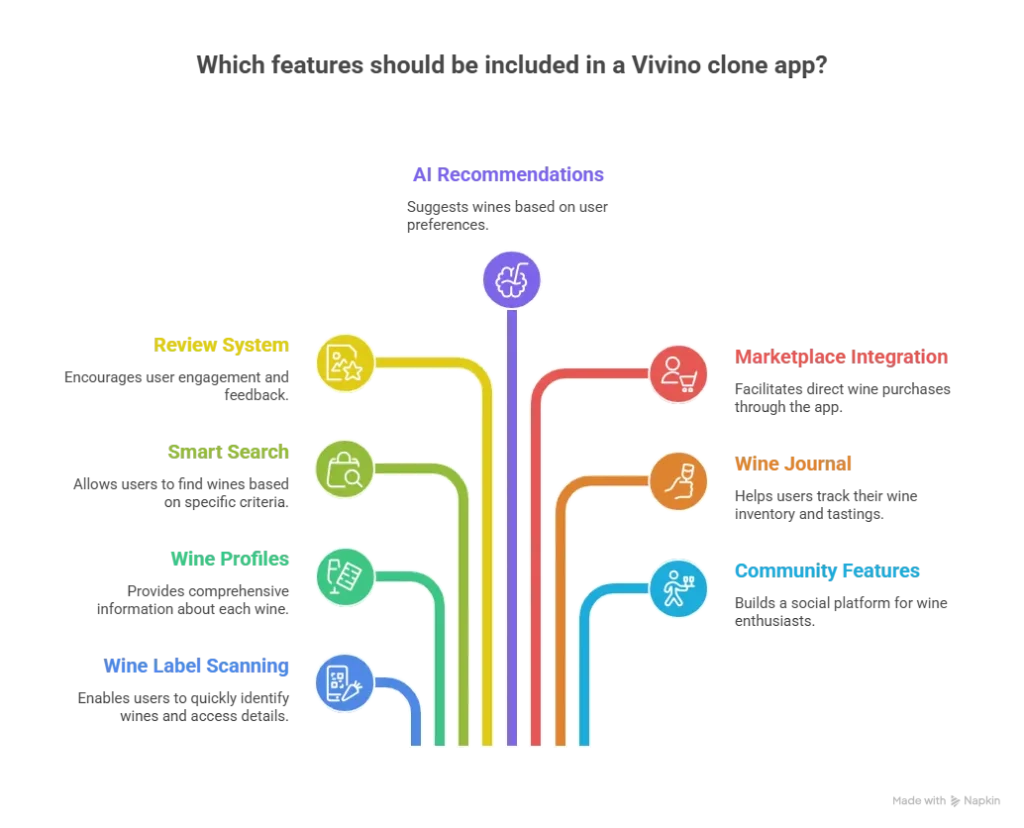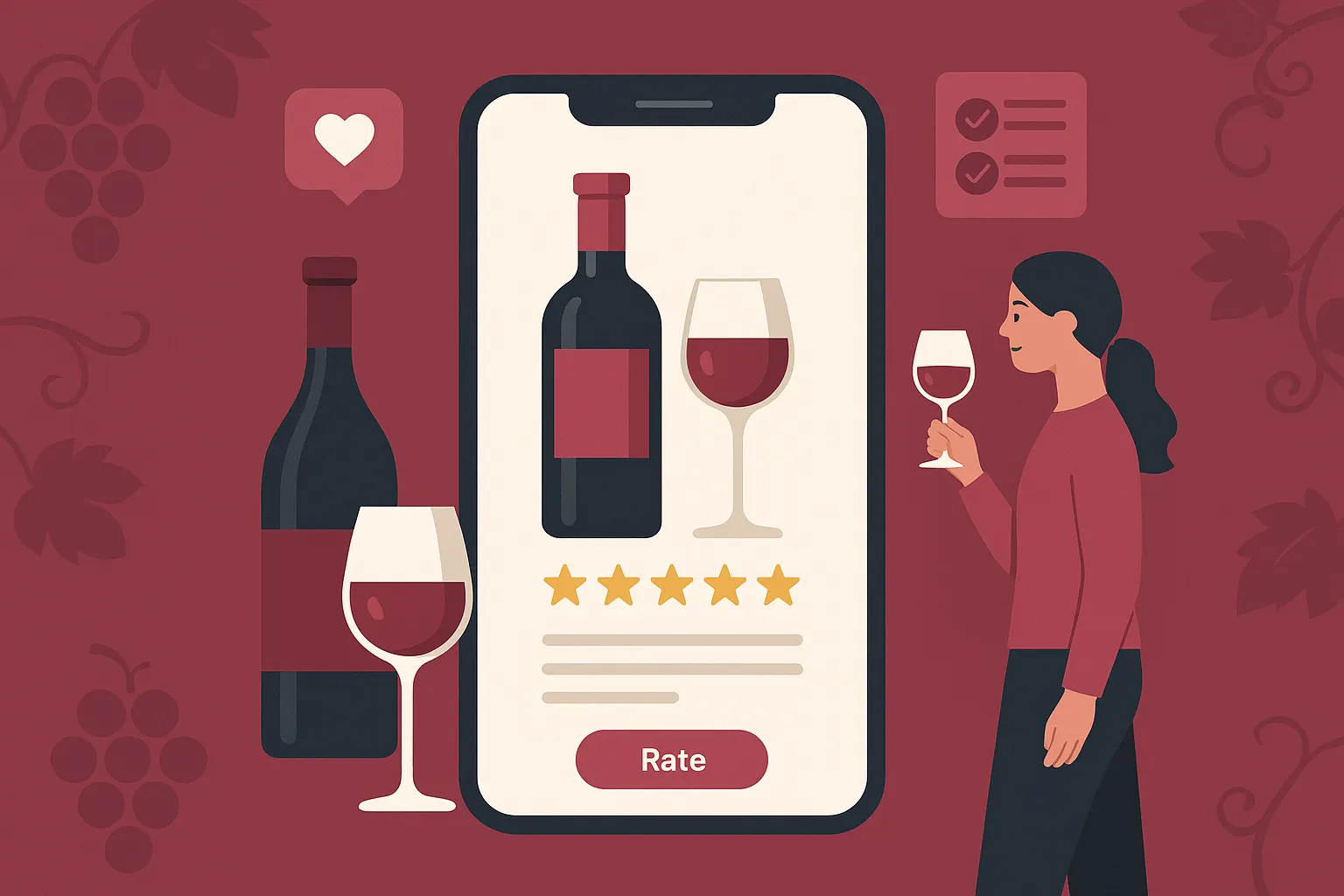The days of picking wine based on guesswork or pretty labels are long gone. Thanks to apps like Vivino, wine lovers now turn to their phones for instant reviews, ratings, food pairing suggestions, and price comparisons. It’s a digital sommelier in your pocket—and it’s made wine discovery more accessible than ever. But here’s the good part: Vivino doesn’t have a monopoly on wine tech. Entrepreneurs are now building their own wine discovery platforms using Vivino Clone scripts, tailored for different regions, tastes, and communities.
If you’re a founder looking to blend technology with the wine experience, a Vivino Clone app is your shortcut to a full-bodied product launch. This guide compares the best scripts available in 2025, unpacks the must-have features, and breaks down pricing so you know exactly what to expect.
Why Build a Vivino Clone in 2025?
Vivino revolutionized how wine is bought, rated, and explored. But it’s also a general-purpose global platform. What if you want to launch a curated app for French wines only? Or a tasting-focused app for small vineyards? Or an exclusive app that pairs wine reviews with direct-to-consumer ordering? A Vivino Clone gives you that flexibility.
What Makes Vivino’s Model So Powerful?
- User-Generated Reviews: People trust peer recommendations, especially when wine knowledge feels intimidating.
- Image Recognition: Snap a label, get instant data—grape variety, origin, average price, and reviews.
- Marketplace Integration: Users can often purchase the wine directly through the app.
- Personalization: Vivino recommends wines based on past reviews, locations, and preferences.
A clone script that replicates these strengths while letting you customize for your audience is a solid foundation for success.
Read More : Top Vivino Features Every Wine App Needs
Must-Have Features in a Vivino Clone Scripts

In 2025, wine buyers are savvy, mobile-first, and expect intuitive design. Your app can’t just show ratings—it has to enhance the entire wine discovery process. Here’s what a good Vivino Clone must deliver:
1. Wine Label Scanning
Image recognition is non-negotiable. Users should be able to scan a label and immediately get key details—winery, region, varietal, vintage, and price.
2. Wine Profiles with Deep Metadata
Each wine should have a dedicated page with:
- Grape composition
- Tasting notes
- Aging potential
- Best food pairings
- User reviews and average ratings
- Price trends and availability
3. Smart Search and Filtering
Search by taste profile (fruity, dry, earthy), price range, region, vintage, or even specific vineyards. This is crucial for wine enthusiasts who know what they like.
4. Review System with Photos and Notes
Users should be able to leave star ratings, detailed reviews, and even upload tasting photos. Think of it as Yelp meets CellarTracker.
5. AI-Based Recommendations
Machine learning can suggest wines based on a user’s review history, search behavior, or regional trends.
6. Direct Marketplace Integration
Allow users to buy wine through the app by integrating with local sellers or affiliate networks. Include shipping info, delivery tracking, and dynamic pricing.
7. Wine Journal or Cellar Tracker
Let users log their favorites, track their personal wine inventory, and rate past tastings.
8. Community and Social Sharing
In-app groups, regional discussions, and event-based chats (like “Napa Valley Tastings 2025”) help turn the app into a community, not just a catalog.
Technical Requirements for a Smooth Wine Experience
A good wine app must taste as smooth as a fine Pinot Noir—on both the frontend and backend. Here’s what to look for under the hood:
- Frontend: Flutter or React Native for seamless iOS and Android performance
- Backend: Laravel or Django for flexible architecture and scalable APIs
- AI Layer: TensorFlow Lite or Amazon Rekognition for label scanning and ML-based suggestions
- Database: PostgreSQL or Firebase to handle complex wine metadata and user histories
- CMS Integration: Admin panel for adding/editing wine entries, reviews, and promotions
Clone Script Evaluation: What to Compare
When reviewing Vivino Clone scripts, use this list to separate the bold cabernets from the watery table wines:
- Accuracy of Image Recognition: How well does it match scanned labels to the correct database entry?
- Customizability: Can you control which wines get featured, or build curated lists like “Under $20 Bordeaux”?
- Multi-Language Support: Wine is global. Your app should be too.
- Monetization Flexibility: Does it support affiliate links, marketplace selling, ad placements, or premium memberships?
- Analytics: Are you getting actionable data on user searches, top-rated wines, and purchase trends?
- UI/UX Polish: Is the interface clean, smooth, and engaging? Poor UI will kill repeat usage.
Read More : Most Profitable Alcohol Delivery Apps to Launch in 2025
Cost Factors & Pricing Breakdown
Vivino-Style Wine Review & Liquor Marketplace — Market Price
| Development Level | Inclusions | Estimated Market Price (USD) |
|---|---|---|
| 1. Basic Wine Review MVP Platform | User onboarding, product listings, rating & review system, search filters, basic admin controls | $40,000 |
| 2. Full-Feature Liquor & Wine Marketplace Platform | Barcode scanning, product recognition, recommendation engine, seller onboarding, category management, analytics dashboards, KYC flows, wishlist, advanced reviews | $85,000 |
| 3. Enterprise Beverage Commerce Ecosystem | Multi-store & multi-region marketplace, subscription clubs, AI-based wine suggestions, inventory automation, logistics integrations, loyalty system, mobile apps | $160,000+ |
The pricing above represents the global average cost to build a Vivino-style wine marketplace from scratch — where teams spend months developing product recognition, review engines, marketplace workflows, and compliance-driven operations.
Miracuves Pricing for a Vivino-Style Platform
Miracuves Price: Starts at $2,899
Miracuves offers a ready-to-launch Vivino-style liquor marketplace supporting product reviews, wine ratings, barcode scanning, seller panels, recommendation workflows, delivery modules, and a powerful admin dashboard — all delivered at a fraction of the global development cost. Built on a refined PHP tech stack, the platform ensures stability, scalability, and seamless commerce operations for liquor, wine, and beverage businesses.
Note
This package includes full non-encrypted source code, complete deployment support, backend/API setup, admin panel configuration, and Android/iOS publishing assistance — giving you a fully operational marketplace ready for growth.
Launch your Vivino-style wine marketplace in days while others spend $160,000+ and wait months — start with Miracuves and go live faster than the competition.
Delivery Timeline for a Vivino-Like Platform with Miracuves
Estimated deployment timeline: 3–9 days, depending on:
- Product categories & multi-store setup
- Payment gateway configuration & liquor-compliance settings
- Review, rating & recognition module depth
- Branding and UI customization
- Subscription tiers & recommendation logic
Tech Stack
This solution is engineered using robust backend frameworks — PHP, MySQL & Flutter, optimized for performance, scalability, and seamless eCommerce and review-rich workflows.
Use Cases for Vivino Clone Scripts
A wine discovery app doesn’t have to be global to be successful. In fact, going niche often works better. Here are some smart use cases:
- Local Wine Clubs: Build a private-label app for wine clubs that offers curated selections and event invites
- D2C Wineries: Allow boutique vineyards to showcase, sell, and get rated by fans directly
- Wine Tourism Guides: Combine wine discovery with geo-location to guide users to nearby tastings and vineyards
- Subscription Services: Integrate monthly curated wine boxes with in-app profiles and review prompts
Common Mistakes to Avoid
- Ignoring Label Scanner Quality: Users will drop off if scanning fails or gives irrelevant results
- No Seller Integration: Ratings are good, but being able to buy directly is better
- Too Much Complexity Up Front: Make onboarding simple. Don’t bombard new users with too many options
- Overlooking Wine Metadata Accuracy: If your wine data is wrong or inconsistent, user trust disappears
Conclusion: Cheers to Smarter Wine Discovery
Building your own Vivino-style app doesn’t mean copying. It means creating a refined, engaging, and purpose-built wine experience for your community. Whether you want to serve wine tourists, club members, or serious sommeliers, a well-designed Vivino Clone script gives you the flexibility to deliver something special. In the world of wine tech, the real flavor lies in personalization, data, and delight. At Miracuves, we help innovators launch high-performance app clones that are fast, scalable, and monetization-ready. Ready to turn your idea into reality? Let’s build together.
Still have questions about Vivino Clone scripts? Let’s clear them up.
Can I launch a wine marketplace and community app together?
Yes, modern clone scripts allow both product listings and user forums or social interactions in a single platform.
Is label scanning reliable enough for real-world use?
High-quality scripts use machine learning and large datasets to ensure label scans match the correct wine entry 90%+ of the time.
Can I integrate with local sellers or POS systems?
Yes, if the clone script is API-ready, you can sync with wine retailers, delivery services, or POS systems.
How do I get a wine database for my app?
Some scripts include starter databases. You can also source public wine data or work with local suppliers to populate the list.
Can I add my own branding and theme?
Absolutely. Most white-label clone scripts let you choose your color palette, fonts, and homepage layout.
Is it possible to launch a region-specific app only?
Yes, and in fact, region-specific platforms often perform better due to community trust and local partnerships.
Related Articles








